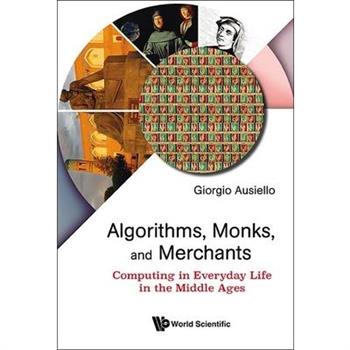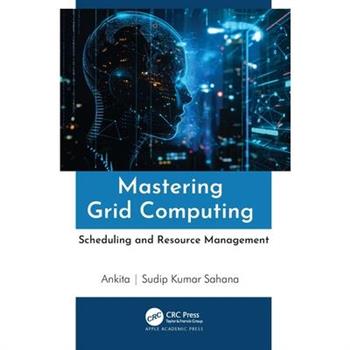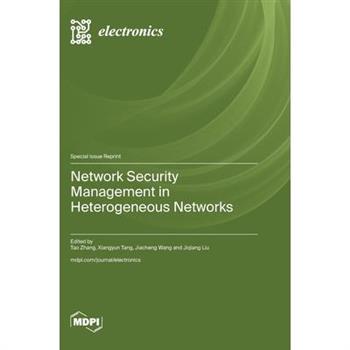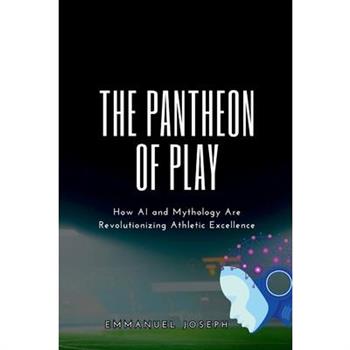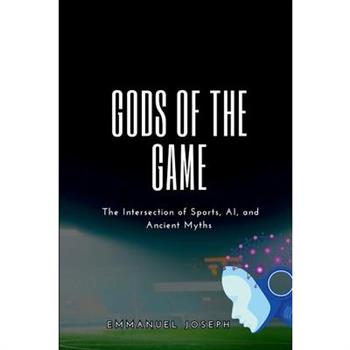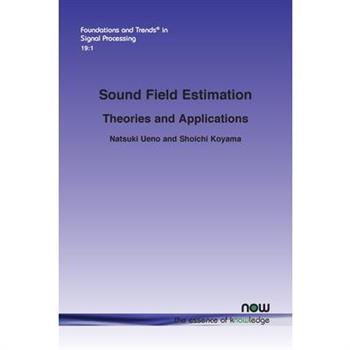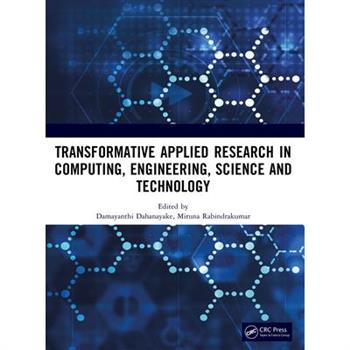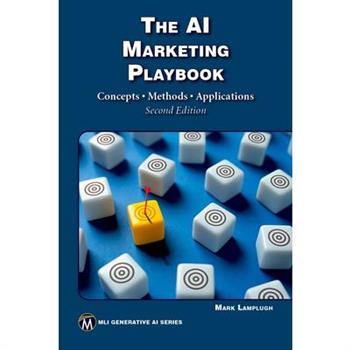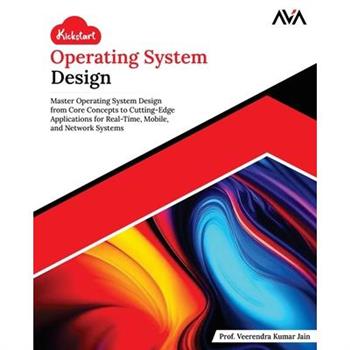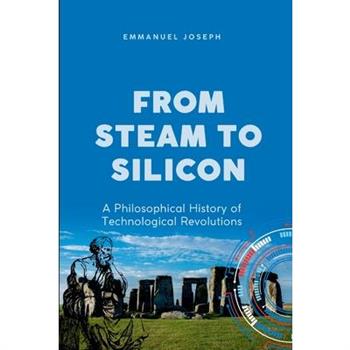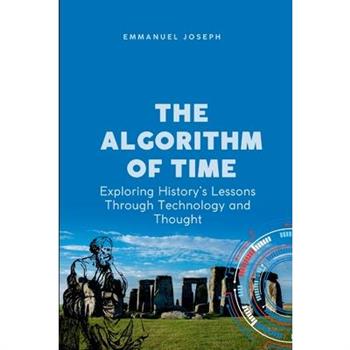Network Security with Cowrie Honeypot Logfiles Analysis
Pioneering Israeli Women in Electronic Computing (1953--1970)
This book offers a journey into the history of pioneering Israeli women in electronic computing and explores the impact these women had on the annals of Israeli computing history. With the primary setting being the Weizmann Institute of Science, where the genesis of computing in Israel took place, their stories come to life through the lens of personal narratives, and their personal stories provide a unique window into their experiences, challenges, and triumphs. It delves into a compelling narrative of women who defied societal norms and forged their path in a male-dominated field. Their accounts captivate individuals who are passionate about advocating for gender equality and empowerment, as well as those with an interest in the history of computing and the development of information technology in Israel.
Smart Risk Management in Software Requirements
Advances in Intelligent Data Analysis and Its Applications, 2nd Edition
This Special Issue highlights the growing importance of intelligent data analysis and its profound applications in addressing the challenges of the big data era. As a key driver of innovation and progress across diverse sectors, intelligent data analysis requires robust research and implementation to derive actionable insights from vast, complex datasets. By fostering advancements in various industries, this field plays a vital role in meeting the dynamic demands of modern data-centric environments. The aim of this Special Issue is to delve into cutting-edge developments in intelligent data analysis and their applications. Topics span a broad spectrum, including advanced data mining algorithms, machine learning integration, natural language processing innovations, granular computing frameworks, cognitive computing techniques, and hybrid approaches. This initiative seeks to provide insights into the academic growth of the field while enabling research and industry to adopt transformative solutions that shape its future trajectory. Scholarly and professional contributions have enriched intelligent data analysis, covering domains such as machine learning, data mining, social network analysis, machine vision, and hybrid computational paradigms. Building on the inaugural volume's success, this Special Issue consolidates recent developments with a focus on real-world applications, encompassing sectors like finance, healthcare, business intelligence, engineering, and environmental science.
Algorithms, Monks, and Merchants
This book explores the tight relationship that existed between application needs and computational problem-solving methods during the Middle Ages, particularly the period between the 9th and 15th centuries. It was a time of great cultural and economic evolution, starting with the blooming phase of Arab science and continuing with the acquisition of Hindu-Arabic computation methods (based on the decimal positional number system) in Western Europe.The aim is to show, by means of suitable examples, how in the Middle Ages mathematics and computation were tightly related to the solution of everyday life problems. These ranges from religious problems like computing the date of Easter to land measurement and financial computations, as well as handling various volumes and managing agricultural resources.In particular, during the late medieval centuries when the economy saw a substantial upswing, merchants' activity required strong computational skills to solve a great variety of problems. It is such need that led to the creation of the so called 'abacus schools' that the sons of merchants, primarily Italians but also from other European regions, attended during their boyhood to learn computing techniques.
Mastering Grid Computing
Grid computing, a computing infrastructure that combines computer resources spread over different geographical locations to achieve a common goal, is seen as an efficient solution to solve complex real-world computer problems in a shorter time. Grid computing makes it easier to collaborate with other organizations, makes better use of existing hardware, and reduces transmission congestion, leading to more efficient electricity markets, improved power quality, and a reduced environmental impact.Highlighting the salient features of grid computing, this new book, Mastering Grid Computing: Scheduling and Resource Management, begins with the basic definition of grid and its architecture and also discusses advances to the complex hybridized model of grid computing, grid scheduling, and grid resource management. The chapters address different problems causing grid bottlenecks, the formulation of solution strategies, implementation of grid scheduling, along with case studies of grid computing.This book introduces several scheduling algorithms, such as First Come First Serve (FCFS), Shortest Job First (SJF), Ant Colony Optimization (ACO), Particle Swarm Optimization (PSO), Genetic Algorithm (GA), and few hybrid algorithms. The book evaluates the efficiency of these algorithms using comparative analysis while also discussing notable grid simulators, such as GridSim, MicroGrid, Alea, and Simgrid toolkits. The book offers a practical example of scheduling algorithms through a simulation environment using the Alea simulator. The book presents information on nearly all the major grid applications in different domains and their future prospects.Key features: Provides comprehensive information on grid computing and different approaches to grid scheduling Includes mathematical equations, numerical computations, and performance analysis reports Contains graphical images of scheduling results for better clarity Includes a test on the performance of scheduling algorithms Provides detailed reports on bio-inspired algorithms The book will be a valuable guide for new and experienced researchers and will advance their understanding of the concept of grid computing in a broader perspective. Starting from the basic definition of grid and its architecture to the complex hybridized model of scheduling, this book is a comprehensive resource on grid computing, grid scheduling, and grid resource management.
Fuzzy Logic and Computational Intelligence
This reprint contains 11 articles that were accepted and published in the Special Issue "Fuzzy Logic and Computational Intelligence" of the MDPI Mathematics journal. It covers a wide range of topics connected to the theory and applications of fuzzy logic approaches, which extracts high-level knowledge from data to improve system performance. This high-level extracted knowledge is learned using machine learning models to design computationally high intelligent systems. This learning mechanism could be made better by implementing optimization techniques that mimic the behavior of representatives or groups. Simply put, they adopt the ways in which individuals exchange and analyze information cooperatively to achieve a particular goal or to make a decision. This reprint provides the readers with extensive explorations of recent advances in computing, intelligent systems, and fuzzy applications. The recent development of real-world applications that are practical and pragmatic make this reprint valuable to the academic community and expert industry practitioners. The purpose of this reprint is to deliver quality novel and unpublished work in the domains of pattern recognition, decision systems, the optimization of complex problems, medical diagnosis, and robotics and intelligent control systems.
Functional Bakery Products
Bakery products such as bread, rolls, cookies, pies, pastries, bars, and muffins play a significant role in the daily diet of modern consumers. The growing interest in the health benefits of food has driven the development of new products and the adaptation of traditional recipes and technologies. These changes also extend to bakery products, which, depending on their composition, can be excellent sources of complex carbohydrates (e.g., starch and dietary fiber), proteins, vitamins, minerals, and phytochemicals that positively impact the human body. This reprint immerses readers in the latest research on the potential of modifying bakery products. It explores how technologies and biotechnologies can be employed to enhance, remove, alter, or improve the bioavailability of components, transforming baked goods into functional foods. The functional and health properties of bakery products depend not only on the nutrient content, but also on the various methods of food processing. For anyone interested in modern food innovation and healthy eating, this reprint serves as an inspiring resource for shaping the future of bakery products.
Fake News Detection Using Data Analytics
Network Security Management in Heterogeneous Networks
Heterogeneous networks, as a critical component of modern communication technology, have experienced rapid development in recent years. The emergence of technologies like 5G, the Internet of Things (IoT), and edge computing has significantly enhanced the diversity and complexity of heterogeneous networks, making them pivotal for diverse application demands. However, the openness and diverse characteristics of heterogeneous networks expose them to serious security challenges. Such networks are vulnerable to attacks like Distributed Denial-of-Service (DDoS) attacks, malware propagation, and jamming attacks, posing significant risks to system stability and data privacy. To address these pressing security challenges, researchers have developed a variety of defense strategies aimed at mitigating risks in heterogeneous networks. Compared to traditional approaches, these strategies exhibit several distinct advantages, such as the ability to efficiently handle large amounts of data while ensuring data security, flexibility in tackling various security challenges, and resilience against advanced and persistent cyberattacks. These approaches provide significant theoretical and practical support for improving the security of heterogeneous networks.
Information Systems and Neuroscience
This book presents the proceedings of the NeuroIS Retreat 2024, June 9 - 11, Vienna, Austria, reporting on topics at the intersection of information systems (IS) research, neurophysiology and the brain sciences. Readers will discover the latest findings from top scholars in the field of NeuroIS, which offer detailed insights on the neurobiology underlying IS behavior, essential methods and tools and their applications for IS, as well as the application of neuroscience and neurophysiological theories to advance IS theory.
Arithmetic of Finite Fields
This book constitutes the refereed proceedings of the 10th International Workshop on Arithmetic of Finite Fields, WAIFI 2024, held in Ottawa, Ontario, Canada, during June 10-12, 2024. The 17 full papers included in this book were carefully reviewed and selected from 29 submissions. They were organized in topical sections as follows: Invited talks; Coding theory; Cryptography and Boolean functions; and Postquantum Cryptography.
EU Legislative Frameworks of Converged Security Systems
Machines, Computations, and Universality
This book constitutes the refereed proceedings of the 10th International Conference on Machines, Computations, and Universality, MCU 2024, held in Nice, France, during June 5-7, 2024. The 8 full papers and 1 invited paper in this book were carefully reviewed and selected from 14 submissions. The scope of the conference topics includes, but is not limited to, computation in the setting of various discrete models Turing machines, register machines, cellular automata, tile assembly systems, rewriting systems, molecular computing models, neural models, analog and hybrid models, BSS machines, infinite time cellular automata, real machines, quantum computing, and the meaning and implantation of universality in these contexts.
An Ode to Artificial Intelligence (Ai)
Advances in Artificial Intelligence - Iberamia 2024
This volume LNCS 15277 constitutes the refereed proceedings of the 18th Ibero-American Conference on AI, IBERAMIA 2024, held in Montevideo, Uruguay, during November 13-15, 2024. The 36 full papers presented together with 14 short papers were carefully reviewed and selected from 96 submissions. The conference focuses on AI engineering & applications; bio-inspired & soft computing; computer vision & robotics; knowledge representation & reasoning; machine learning; multi agent systems; natural language processing; and social AI.
SAP Activate Project Management Certification Guide
Get ready for the SAP Activate project management exam with this certification study guide for C_ACT_2403! Master all the important exam topics, from agile project planning and delivery to new implementations and system conversions. Reinforce your knowledge with a review of key terminology and practice questions and answers for each subject area. Set yourself up for success on test day!In this book, you'll learn about: a. The TestIf you're preparing to get certified in project management with SAP Activate, this is the book for you. This guide follows the structure of the exam, so deepen your knowledge of SAP Activate and walk through topics new to exam C_ACT. b. Core ContentReview major subject areas like SAP Activate project planning, core workstreams, new implementations, and system conversions. Then master important terminology and key takeaways for each topic. c. Q&AAfter reviewing each chapter, solidify your knowledge with questions and answers for each section to improve your test-taking skills.Highlights include: 1) Exam C_ACT2) SAP Activate methodology3) Agile project planning4) Agile project delivery5) Scrum6) Workstreams7) New implementation8) System conversion9) Selective data transition10) On-premise SAP S/4HANA11) SAP S/4HANA Cloud
Cybersecurity for SAP
Protect your SAP system from bad actors! Start by getting a thorough grounding in the why and what of cybersecurity before diving into the how. Create your security roadmap using tools like SAP's secure operations map and the NIST Cybersecurity Framework (CSF). Then walk through key cybersecurity processes: vulnerability management, threat detection, incident response, disaster recovery, and more. With step-by-step instructions for implementing infrastructure and network security and using tools like SAP Trust Center, this guide will help you safeguard your system!
Public management with the application of artificial intelligence
The object of study, in this case, will be focused on understanding the technology and the relationship with society, which was projected by CONPES document in 2019 that opens the way to face the reality in a country where technology does not reach every corner and the waiting time to advance a procedure is too high compared to our neighbors, and therefore it is valid to ask how to use AI, as an aid tool, to reduce the waiting time in the daily procedures of citizens, especially in the District Secretary of Mobility? As a thesis, it is outlined that there is an anti-formalist reading, which makes visible a conflict of interests between the administration and the administered. The above to conclude that with the help of artificial intelligence in turn with algorithms we can speed up the procedures to people who are worn out in terms of time with automated tools.
RFID Based Accident Zone Warning System
Transformative Applied Research in Computing, Engineering, Science and Technology
This was the first international conference conducted by NSBM Green University in Sri Lanka under the theme, "Breaking boundaries: pioneering solutions for global challenges". It focused on a diverse community of scholars, researchers and practitioners from around the globe to explore innovative approaches and breakthroughs in applied research across various disciplines, i.e., computing, engineering, science and technology. It dived into engaging discussions, presentations, and workshops covering a wide array of transformative topics, spanning from cutting-edge advancements in technology and science to impactful solutions addressing pressing societal challenges. It provided a pivotal opportunity for both seasoned experts and budding researchers to convene, fostering the exchange of vital information, cutting-edge research ideas or technology and innovative ideas, forge collaborations and shape the future of applied research.
The AI Marketing Playbook
Explore the transformative world of AI-driven marketing by integrating Artificial Intelligence into modern marketing strategies. This book is designed to help businesses optimize their operations, personalize customer experiences, and harness the full potential of AI to drive growth and innovation. You will learn the foundational concepts of AI and machine learning, discover best practices for data hygiene, structuring, and optimization, and explore how AI tools can transform customer data into actionable insights, enhancing your ability to create personalized and effective marketing campaigns. The book is tailored for marketing professionals, business owners, and digital strategists who are eager to integrate AI into their marketing practices. It is equally valuable for beginners and experienced marketers who want to stay at the forefront of the rapidly evolving digital marketing landscape. FEATURES: Includes step-by-step guides for implementing AI tools in SEO, social media, and emailCovers the use of AI to analyze customer behavior, benefits of chatbots, and AI-powered customer serviceFeatures real-world cases from leading companies like Netflix, Amazon, and SpotifyUses AI tools to transform customer data into actionable insights for more effective campaigns
Kickstart Operating System Design
Master Operating Systems (OS) design from fundamentals to future-ready systems! Are you looking for a comprehensive, practical introduction to operating system design for beginners and experts? Kickstart Operating System Design gives you everything you need to understand and implement core OS principles for real-time, mobile, and network systems. This book covers modern OS kernel and memory management, advanced process scheduling and synchronization, and fundamental file system basics. Book DescriptionOperating systems (OS) are the backbone of modern computing, enabling seamless interaction between hardware and software across desktops, mobile devices, embedded systems, and networks. A solid understanding of OS design is essential for students pursuing careers in software development, system architecture, cybersecurity, and IT infrastructure. [Kickstart Operating System Design] provides a structured, university-aligned approach to OS design, covering foundational and advanced topics essential for mastering this critical field. Explore core concepts such as process management, system calls, multithreading, CPU scheduling, memory allocation, and file system architecture. Delve into advanced areas like distributed OS, real-time and embedded systems, mobile and network OS, and security mechanisms that protect modern computing environments. Each chapter breaks down complex topics with clear explanations, real-world examples, and practical applications, ensuring an engaging and exam-focused learning experience. What You'll Learn Inside: Step-by-step coverage of operating system design book essentials, from hardware software interfaces to modern application needsPractical guides to kernel and system calls, memory management techniques, and hardware and software integrationExpert explanations of process scheduling concepts, synchronization, and multiprocessing OS conceptsIn-depth exploration of distributed operating systems and embedded OS guide for new technology platformsNetwork operating systems, mobile OS architecture, and multimedia OSStrong focus on OS security mechanisms, protection, and best practices in modern app designEasy-to-follow sections on file systems, security concepts, memory.Who is This Book For?Students and professionals who want to master operating system for mobile and network devices, real-time systems, and modern computingDevelopers and engineers seeking practical insights in practical guide to file systems and security concepts.Your Roadmap to Real-World OS Design: Learn hardware software interfaces and system-level programming from the ground upApply advanced knowledge in application security and protection in modern OSDesign, test, and implement scalable solutions for mobile OS architecture and high-performance computingStart your journey in operating system design today! Table of Contents1. Computer Organization and Hardware Software Interfaces2. Introduction to Operating Systems3. Concept of a Process and System Calls4. Threads5. Scheduling6. Process Synchronization and Dead locks7. A. Computer Memory Part 1B. Memory Organization Part 28. Secondary Storage and Interfacing I/O Devices9. File System10. Distributed OS11. Real-Time Operating Systems and Embedded Operating Systems12. Multimedia Operating Systems13. OS for Mobile Devices14. Operating Systems for Multiprocessing System15. Network Operating System16. Protection and SecurityIndex
Breaking Through Bytes
Breaking Through Bytes: Women Shaping the Digital World celebrates the indomitable spirit of women who redefined technology. Divided into 9 iconic chapters, the book provides vivid portraits of 18 female pioneers who cracked the digital code, women who dared to question, create and conquer, describing the evolution of technology through an inspiring lens.The book spans millennia, tracing the impact of trailblazing women in technology. In early chapters, meet historical figures from the first century to the early 1800s, whose contributions laid the groundwork for today's advancements. Dive into stories of mixed digital artist Thea Baumann, actress and inventor Hedy Lamarr, and pioneering programmer Betty Snyder alongside virtual reality specialist Claire Blackshaw. Discover modern innovators like Kayleigh Oliver, a woman of colour waving the flag for programming all whilst balancing motherhood and tech, and Rocio Evenett, a fashion technologist revolutionising the supply chain. Whether through games, music, or Artificial Intelligence (AI), women from diverse backgrounds have continually defied conventions and reshaped industries.Breaking Through Bytes uniquely explores women's contributions to STEM and digital technologies, focusing on underrepresented innovators across the centuries. It blends detailed technical achievements with personal stories to inspire readers interested in the history of technology, gender diversity, and modern digital innovations.












